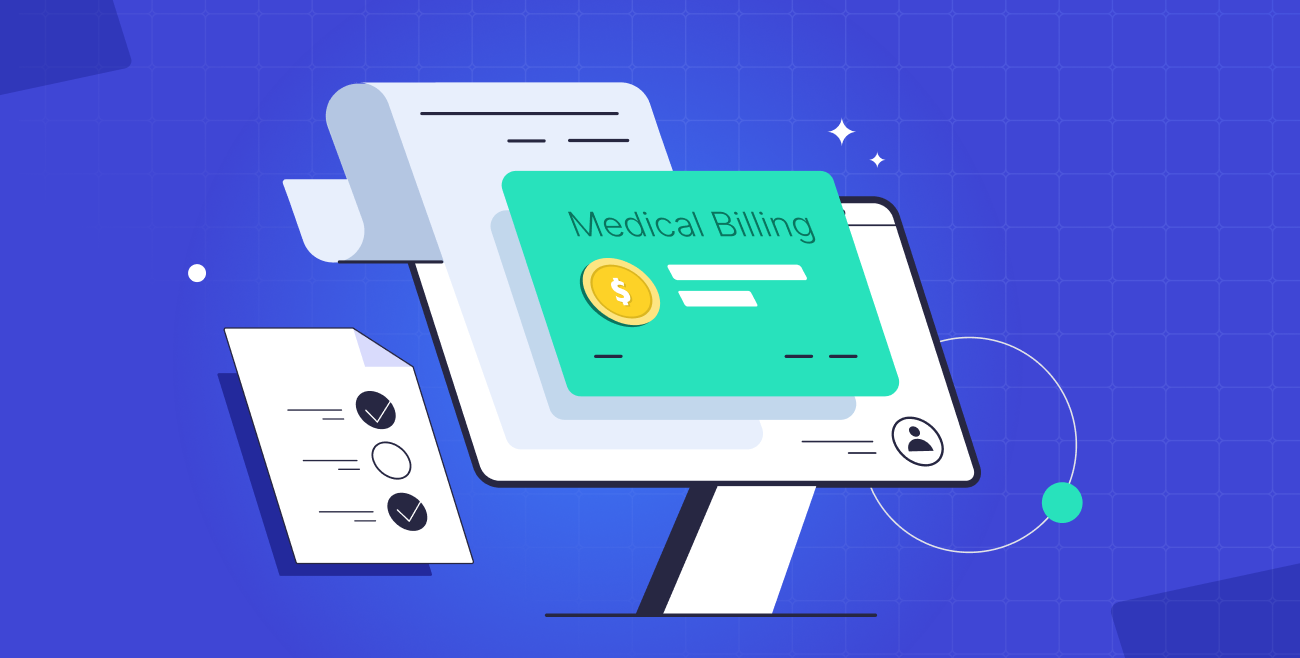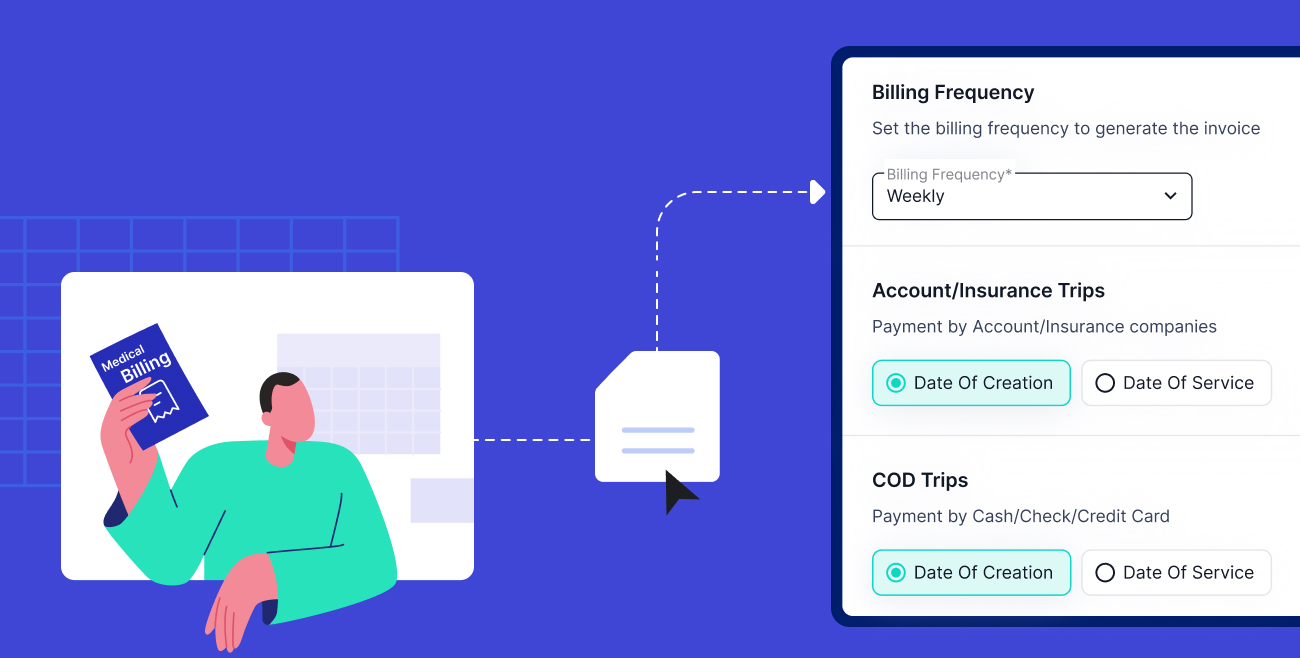
Table of Contents
Are you drowning in paperwork and rejection notices?
Non-emergency medical transportation (NEMT) billing is notoriously complex, but it doesn’t have to sink your business.
NEMT billing can quickly become a web of stringent rules and intricate regulations. It often leaves providers feeling lost in a sea of details, obscuring the larger goals of efficiency and patient care.
Despite the complexity, there is an opportunity to improve processes and gain a better understanding.
This article guides you through a structured, more manageable approach to NEMT billing, from ensuring accurate data collection to streamlining claims submissions.
A Five-Step Process for Medical Billing
A well-designed billing process can boost efficiency, reduce errors, and improve cash flow.
To help you simplify and optimize this process, we have outlined five key steps. Each step covers the essential actions and documents you need to manage your billing operations effectively.
Do More with Less
Handle more trips with fewer dispatchers on your payroll with Tobi.
Request a Demo1. Client Registration and Insurance Verification
Essential Documents: Client Information Form, Insurance Cards, Service Agreement.
The first step is to collect all the relevant information about your client, such as their personal details, insurance information, and service preferences.
You also need to verify their insurance coverage, including the scope of coverage and any co-pays or deductibles.
Ensure all the information is updated and correctly entered into your system to avoid billing issues later.
2. Detailed Service Documentation
Essential Documents: Trip Logs, Service Reports, Additional Service Notes.
The next step is to document every service you provide, from the distance traveled to any special assistance given.
Use digital tools to track and record your services in real-time, as this will form the basis of your billing claims.
Be precise and thorough in this step, ensuring you bill and get paid for all your services.
3. Strategic Claim Preparation
Essential Documents: Claims Forms, Coded Service Documentation.
The third step is to convert your service records into claims.
This step requires understanding NEMT billing codes and payer-specific billing rules.
Code each service correctly, complete the claim forms properly, and comply with the relevant standards.
4. Adjudication Monitoring and Response Management
Essential Documents: Submitted Claims, Payer Correspondence
The fourth step is to monitor the status of each submitted claim.
Be ready to respond quickly to any rejections or denials.
Know the reasons behind these decisions and how to handle them effectively. Make timely corrections, appeals, or resubmissions to ensure smooth claims processing.
5. Financial Reconciliation and Follow-up
Essential Documents: Payment Receipts, Account Statements, and Outstanding Invoices.
The final step is to reconcile the payments received with the services billed.
For any discrepancies, follow up promptly.
Keep track of outstanding payments from insurance payers and clients and have a clear policy for collecting overdue accounts.
How to File NEMT Claims Effectively
It is essential to always use the correct codes when submitting claims.
This ensures that each claim is accurate and up-to-date, reducing the risk of claim rejections or delays and hurting your cash flow and efficiency.
To prevent these problems, you must regularly train your staff on the latest coding changes and best practices. You must also use advanced billing software with built-in coding features to help you avoid coding errors.
Compliance is another vital aspect of NEMT claims.
The healthcare industry is constantly changing, and you must follow the rules and regulations that apply to your business. If you don’t, you could face severe legal and financial consequences.
To remain compliant, you must stay updated on the latest healthcare laws and insurance policy developments.
Documentation can make a huge difference in your claims.
If your documentation is incomplete or inaccurate, you could end up with incomplete billing and claim denials. Make sure that every service you provide is well-documented and accurate. You should also use digital tools that can help you document and track your services in real time.
This way, you can have a reliable and auditable record for billing purposes.
Everything You Need in One Helpful Platform
Have you ever wished for an NEMT software that does it all?
Tobi is your comprehensive answer for streamlining NEMT operations. Tobi combines routing, scheduling, and billing effortlessly in one user-friendly platform, making your work more straightforward and efficient. Imagine less time on paperwork and more on delivering top-notch services.
Tobi keeps you ahead with its up-to-date compliance features, ensuring smooth claim processes and quicker reimbursements.
Are you curious to see how Tobi can help you run your NEMT operations more efficiently? Request a demo for a free 30-day trial and experience how Tobi makes your business better at every turn.



